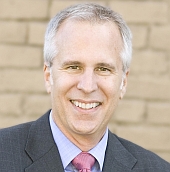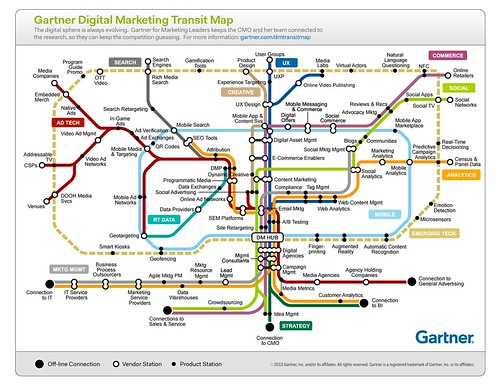Wholesalers, CRM Enhancements And The Risk Of Being Invisible
/ TweetMaybe you know the old movie scene I’m thinking of. Two men are talking to one another. There’s a woman in the scene but for some reason they can’t see her. She’s agitated. She's trying to get their attention, she has information she thinks the men can use. But she isn’t getting through to them. She’s either invisible or dead.
That’s what was I was flashing back to while listening to a recent Wholesaler Masterminds podcast. Rob Shore was interviewing Sam Richter, author of Take the Cold Out of Cold Calling. The focus was on the intelligence-gathering that Richter recommends wholesalers do prior to calling on an advisor for the first time.
As you’ll hear at the 4:20 mark, Richter makes the point that business-to-business sales have changed since the rise of the Internet. Buyers (advisors) have what Richter calls buyer intelligence—advisors already know about wholesalers’ products and their brands.
“Seventeen years ago, if information is power, who had the power? You the wholesaler had the power because you were the only one who knew about the product. Today, everybody knows about the product,” Richter says.
He goes on to explain how wholesalers can use Google and find other information available on “the impersonal Web” to personalize selling by learning what there is to know about the advisors they’re meeting with.
"Nobody cares how much you know, until they know how much you care," says Richter, quoting Theodore Roosevelt.
Wholesalers Never Google Advisors?
Who could disagree with Richter’s message? And evidently, it’s needed.
On the Wholesaler Masterminds show notes page, Shore says an advisor once emailed him:“Wholesalers never Google me. Just lazy.”
Wow! Really? I would have thought that the very least a salesperson would do is use Google to search for any mentions of a prospect. Certainly, that’s what advisors themselves are being coached to use social media to do. (For just one example, see this recent SEI post on how advisors should be taking advantage of what they can learn on LinkedIn.)
I tweeted the “Wholesalers never Google me” line and it struck a chord with a few advisors, including this exchange. Financial planning influencer Michael Kitces re-tweeted the tweet, which Jamie Cox commented on. Note that Cox is a Barron’s top advisor whose broker-dealer is LPL. Probably on your wholesalers' top 250 lists.
RT @RockTheBoatMKTG: “Wholesalers never Google me. Just lazy”--why advisor recon is important http://t.co/wp6mTAur8G via @shorespeak
— MichaelKitces (@MichaelKitces) January 15, 2014
@MichaelKitces@RockTheBoatMKTG@shorespeak they're so dialed into leading w/ product, they overlook the obvious-who we serve, who we are..
— Jamie Cox (@jamesacoxiii) January 15, 2014
Hey! What About The CRM? How About Checking The CRM?
But all of that is just prelude to what prompted this post. While listening to the podcast, I kept waiting for a mention of the mutual fund or exchange-traded fund (ETF) wholesaler’s CRM as a font of knowledge about advisors.
Most marketers I talk to are working studiously on building out the intelligence of the CRM. They're equipping wholesalers with information on advisors’ interaction with marketing communications, including email and Website pages, and they're at least piloting lead scoring based on digital language combined with AUM and sales data.
A growing number are integrating social profiles (e.g., LinkedIn and Twitter) for near real-time updates of what advisors are up to. (See this July 2013 post about Putnam's work.) After listening to Richter’s explanation of his YouGotTheNews.com, I’m thinking there should be an integration with Google News to bring in local news. Maybe some firms have that underway.
To listen to the podcast is to get the impression that wholesalers are on their own out there. That there's no awareness of what's being piped into customer databases. It could help. There's data that could warm up a cold call or an attempt to reconnect.
For Sales productivity, for the good of the enterprise and for Marketing (as in, “You spent all that time on that and to what end?”), these enhancements should not go unseen.
I reached out to Shore, whose Website claims an email list of 10,000 wholesaler names, as a proxy for wholesalers. What was his sense of the CRM as a go-to source for advisor reconnaissance?
Rob ShoreFirst, Shore expressed surprise that Marketing is contributing added insights to the CRMs (and obviously not all are yet, firms are at various stages of delivering various pieces of information).
"No wholesaler has described to me the breadth of capability you just described," he said.
We talked about the potential value of data being reported on individual advisors' interactions with marketing emails or the traffic to Website pages, and he pushed back some.
“I really don’t care, we don’t know what wild hair took somebody to the Website. I don’t think it’s fair to infer that an advisor is hotly interested just because he looked at a few pages on your Website,” he said.
Several product detail pages in a compressed period of time with accelerated frequency? That might be different, Shore allowed. He said that if the CRM aggregated the kind of information heard in the podcast about advisors’ interests and accomplishments (some of this being made available via the social integrations), then that would be compelling and useful information.
We wound our way around to talking about a higher level issue, though, and that’s wholesalers’ use of the CRM, in general. It continues to be what Shore called “spotty.”
“Wholesalers who use SalesForce, as an example, most effectively are committed to robust documentation of a sequence of sales events…My sense and my observation is that there’s not enough of that, there’s not enough of wholesalers committing to diligent CRM input,” he said.
Marketing Is Going To Have To Sell It
It was fun talking to Shore because it was theoretical. It wasn’t the loaded kind of interaction that can characterize Marketing/wholesaler exchanges, when Marketing wants to talk about partnering on a database roadmap and Sales wants to know where an approved presentation is. At the same time, he represented the wholesaler perspective—and the challenge for marketers if all this CRM integration work is going to become visible and yield results.
The work is far from done when a Marketing-led CRM enhancement is complete. It seems clear that Sales management and wholesalers are themselves going to need to be sold on the value of it.
Let’s give Shore the last word:
“How do you prove the value to a sales guy who ‘just wants to sell’? How are you going to show wholesalers how to use the data efficiently in the course of a day when they’re crushed with information, and without them needing to become a propeller head? The data may be there but in the swirl of everything else that the wholesaler is supposed to be proficient at, how can Marketing make them better at using the data?”

























